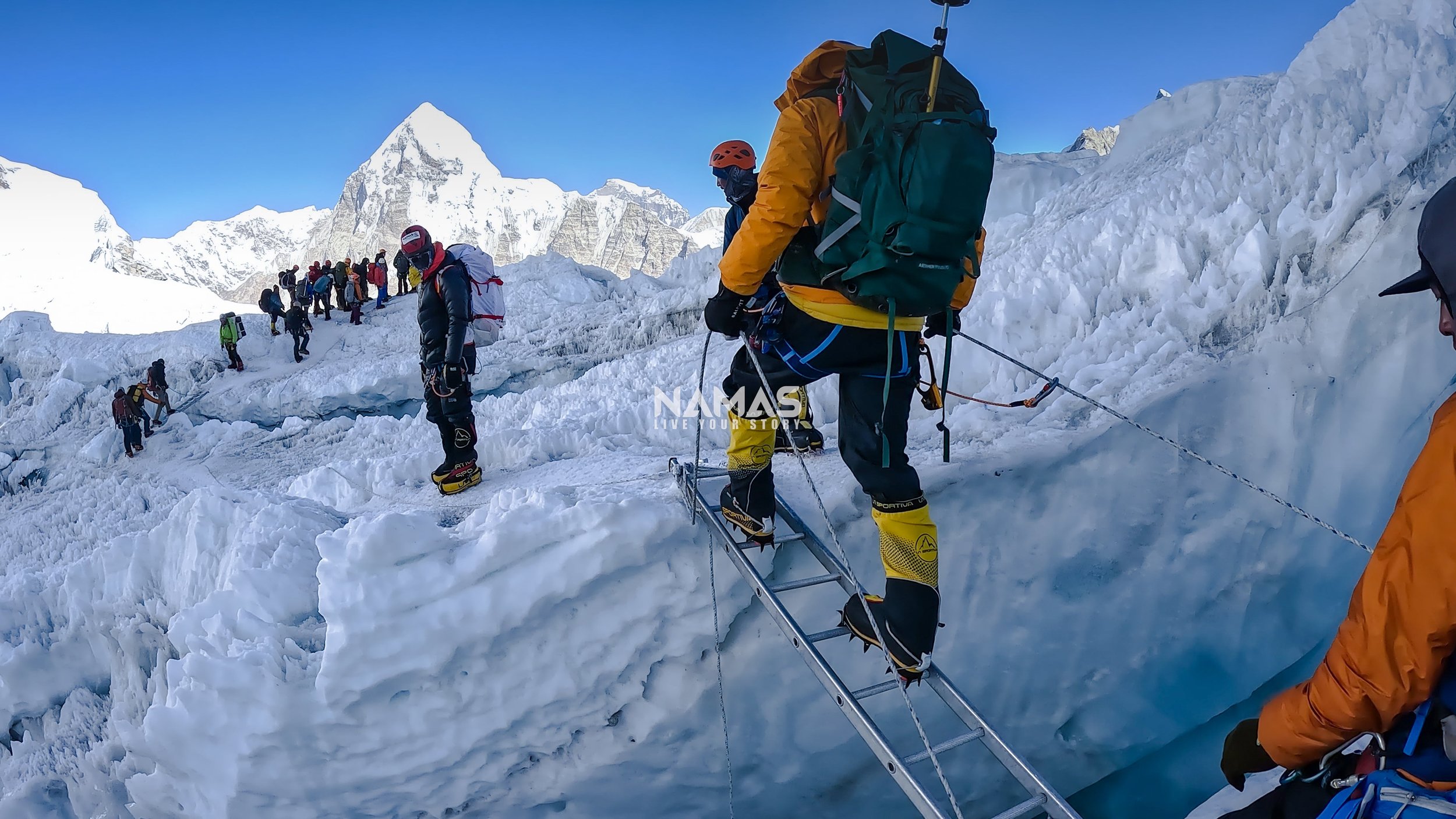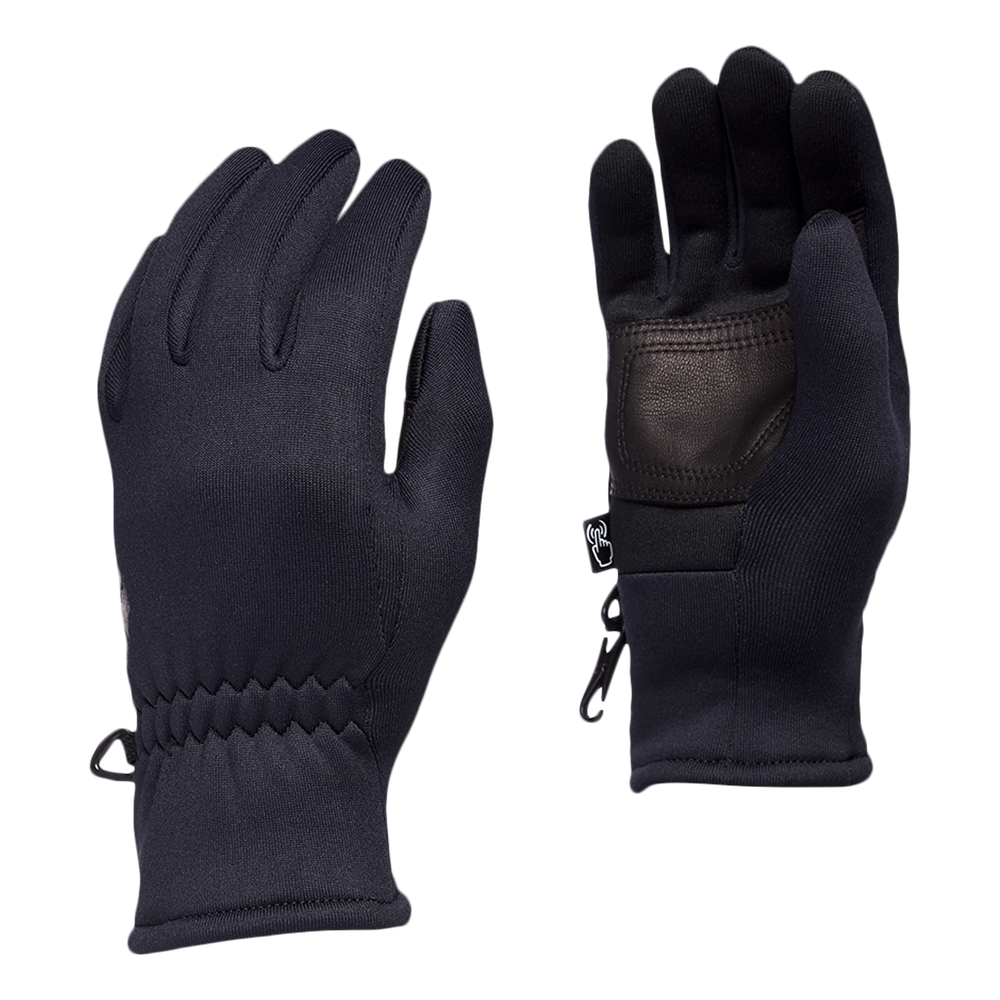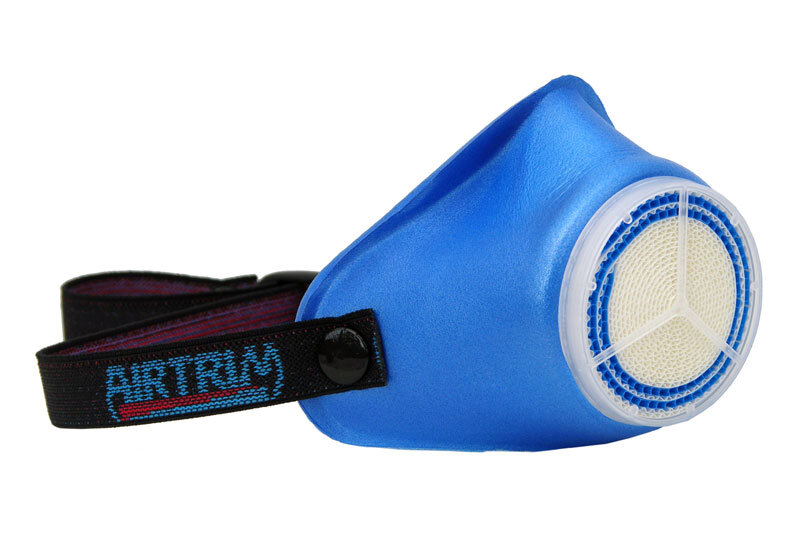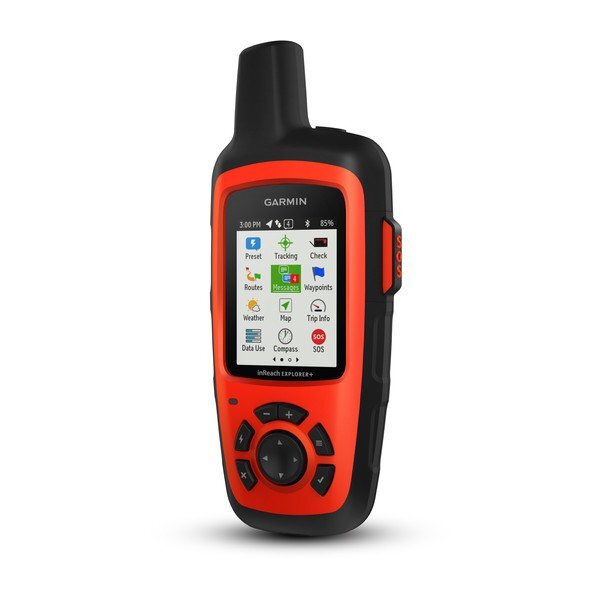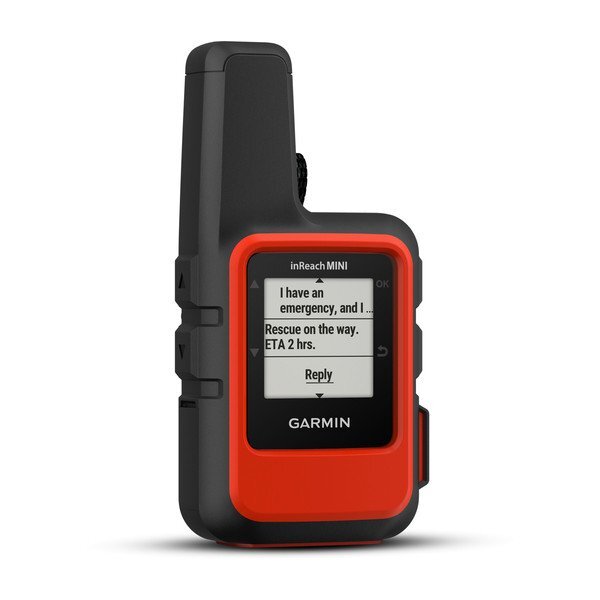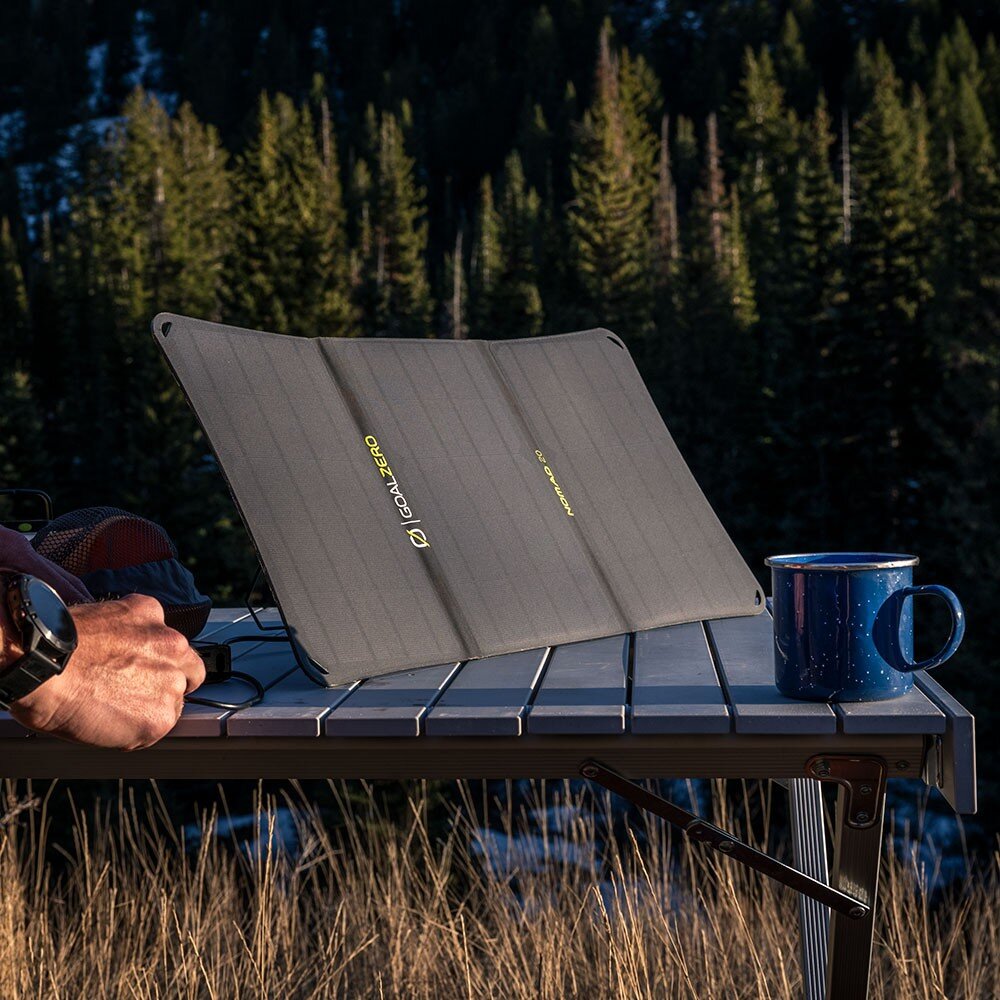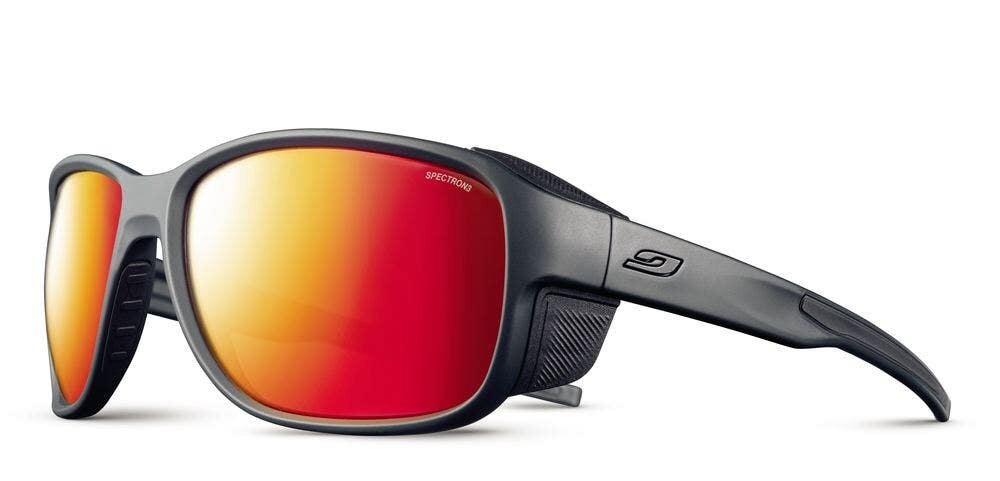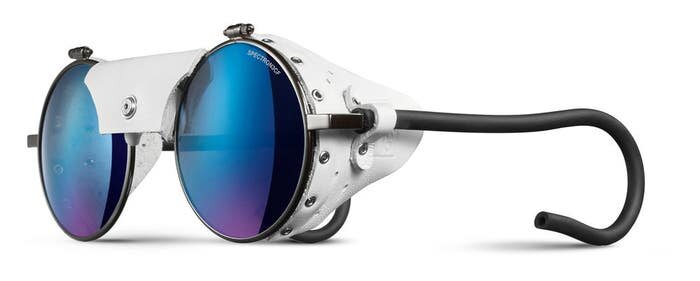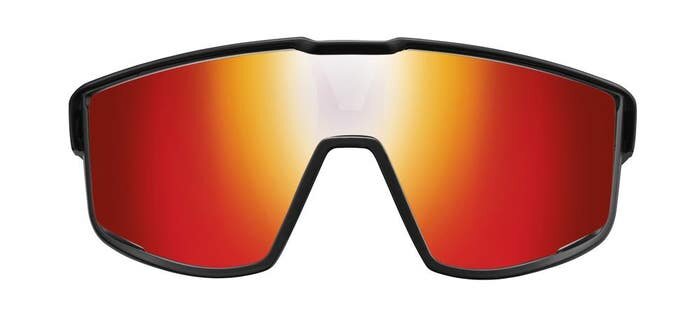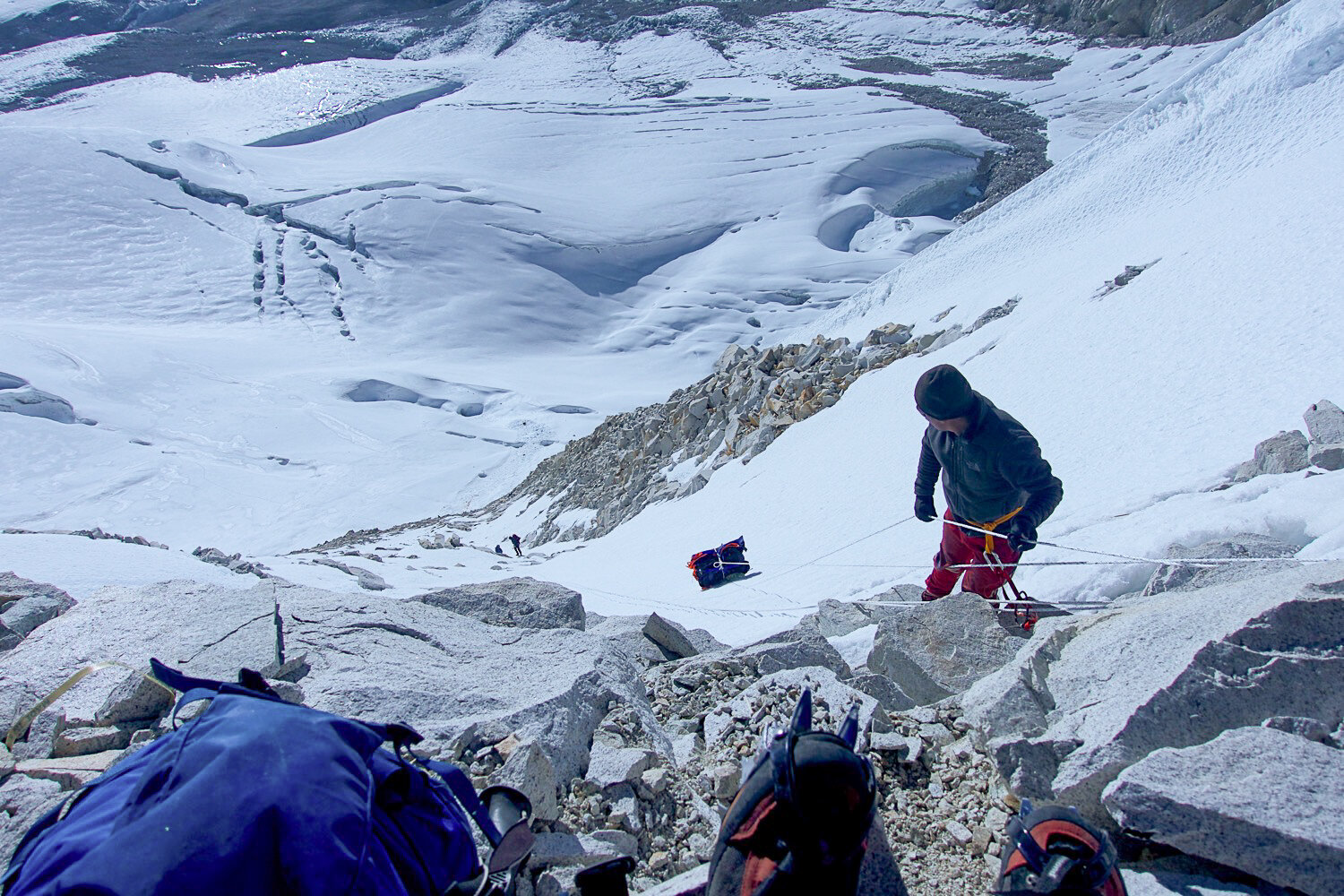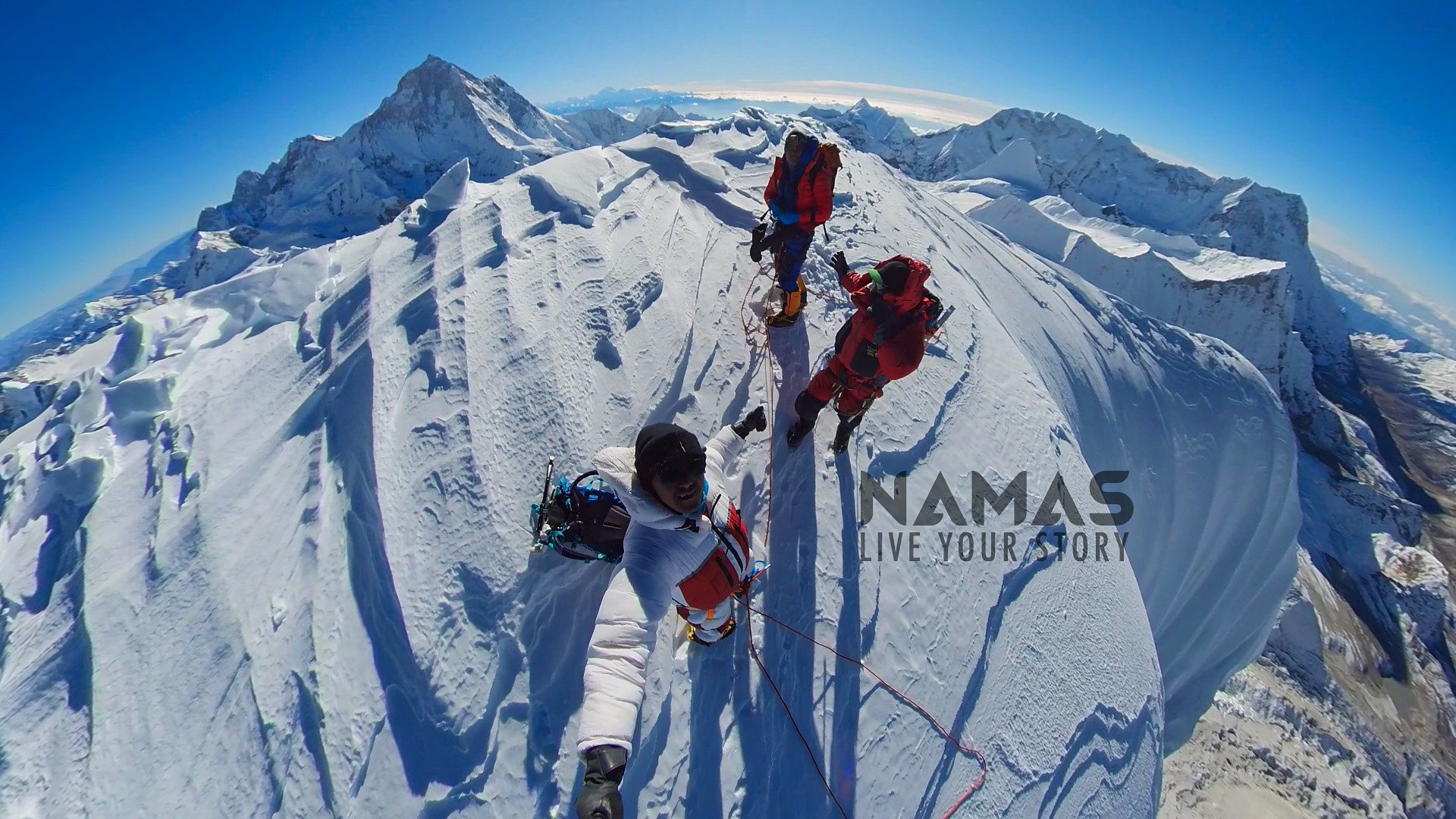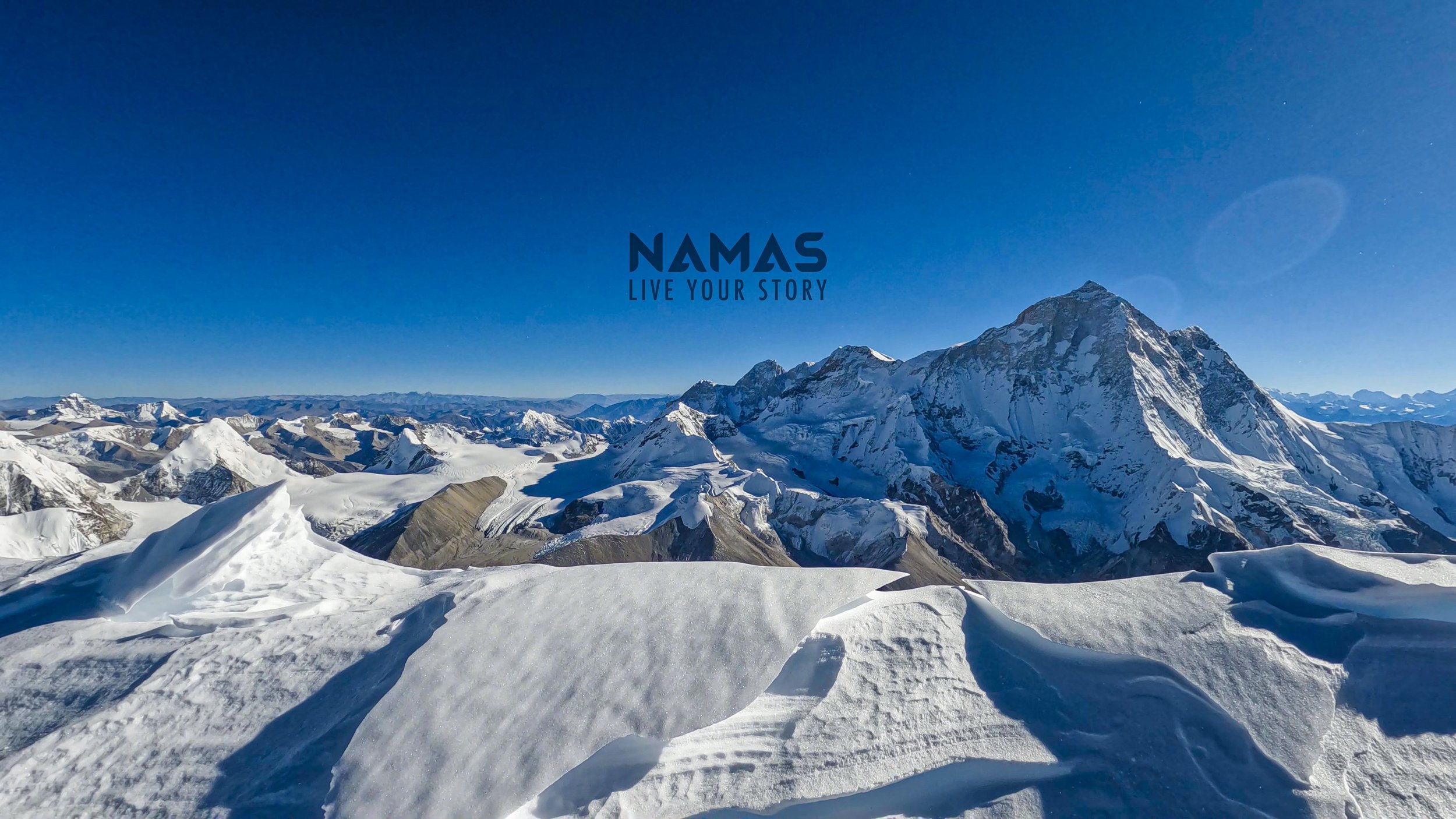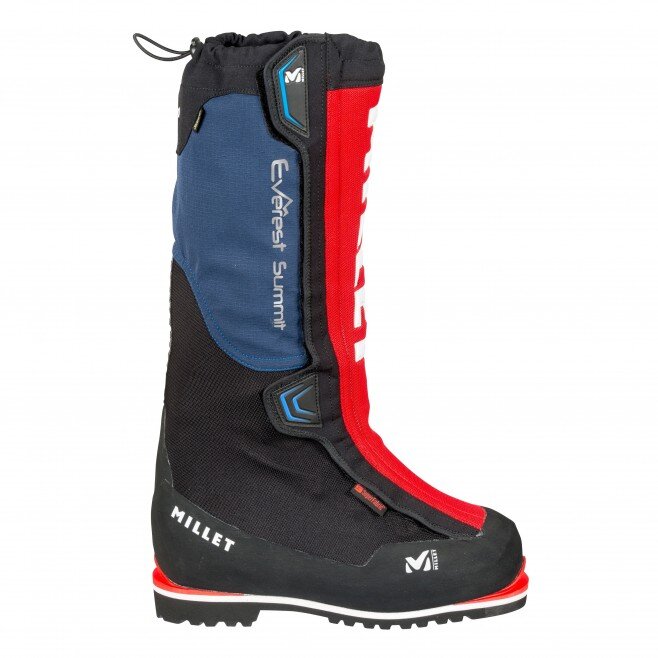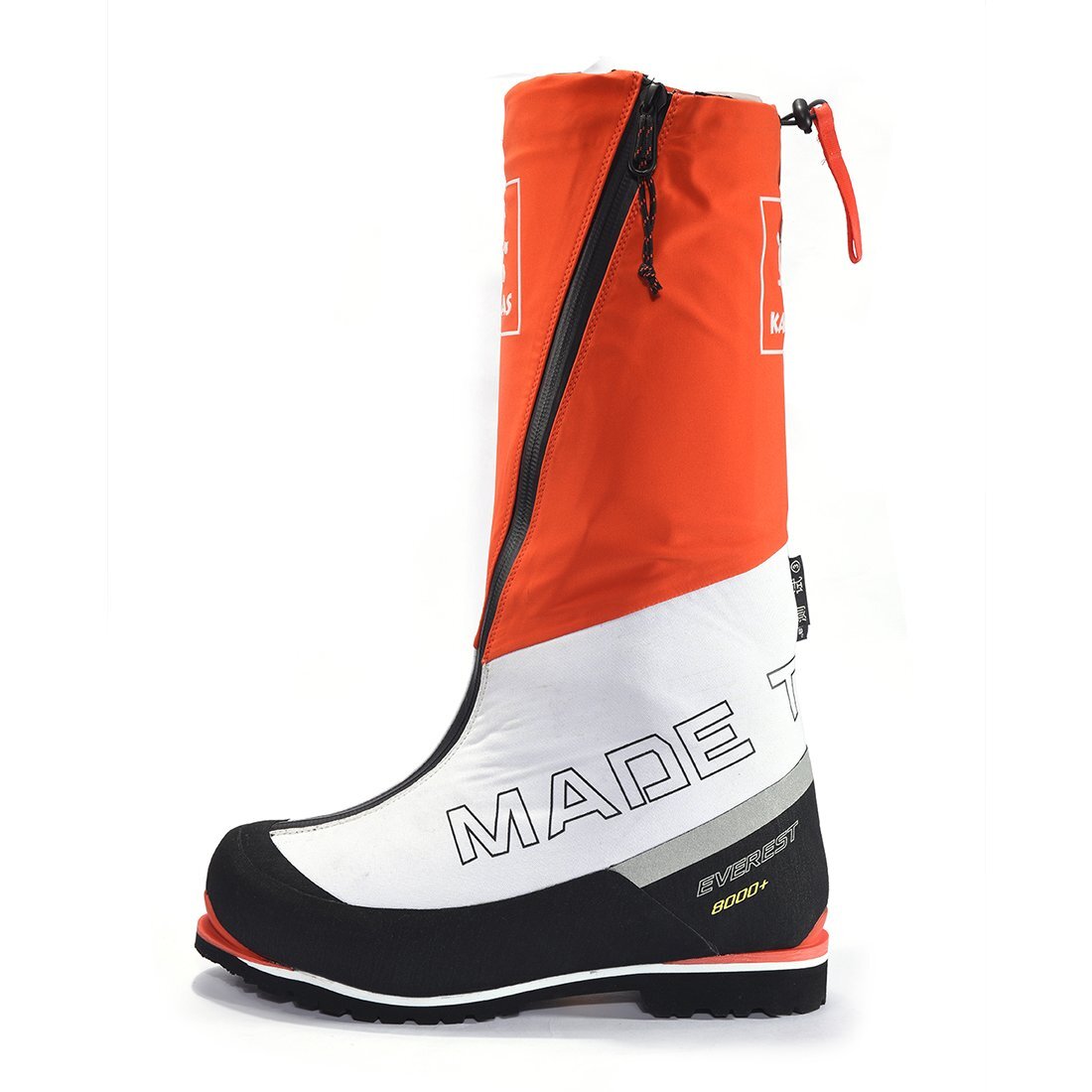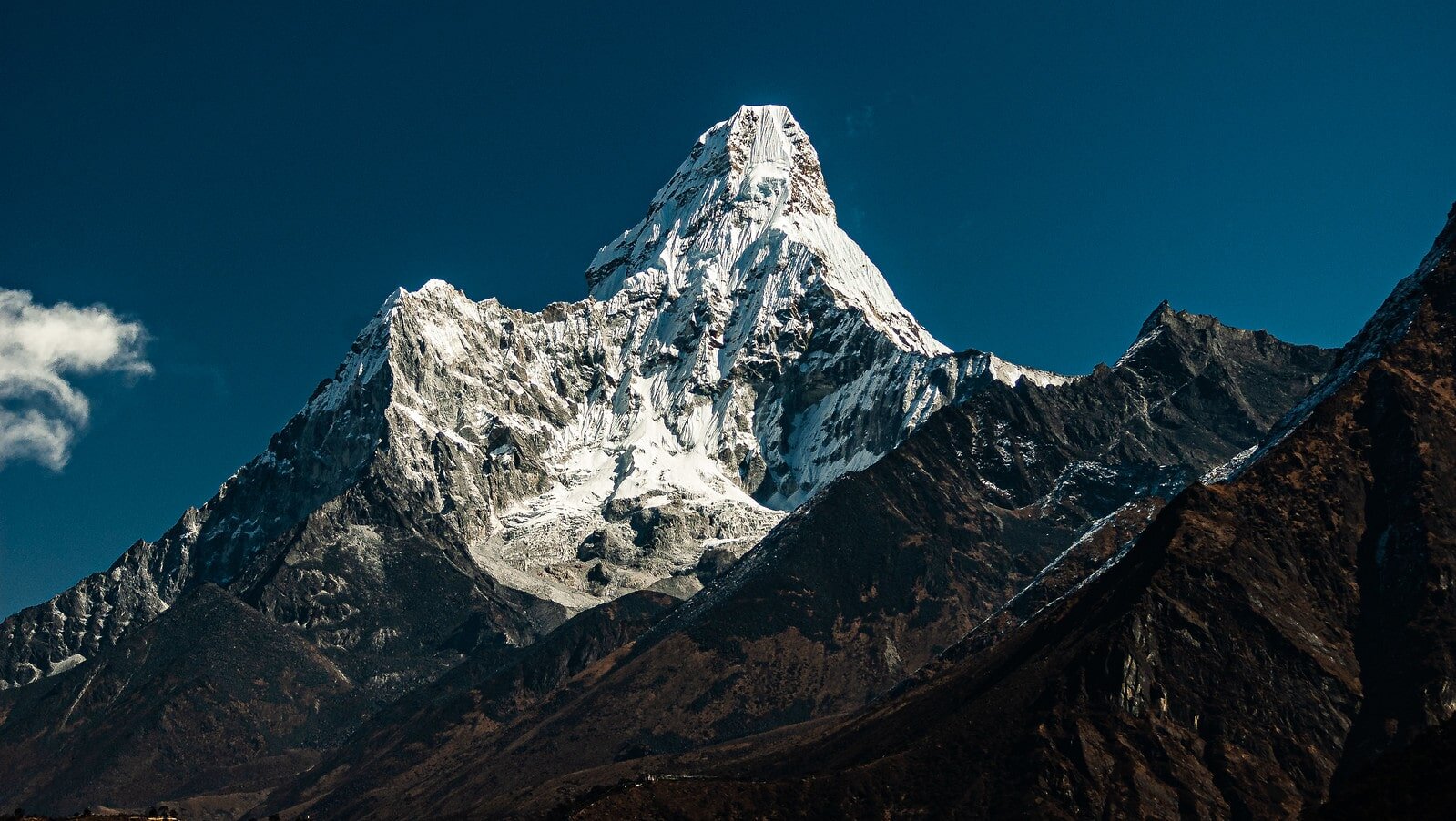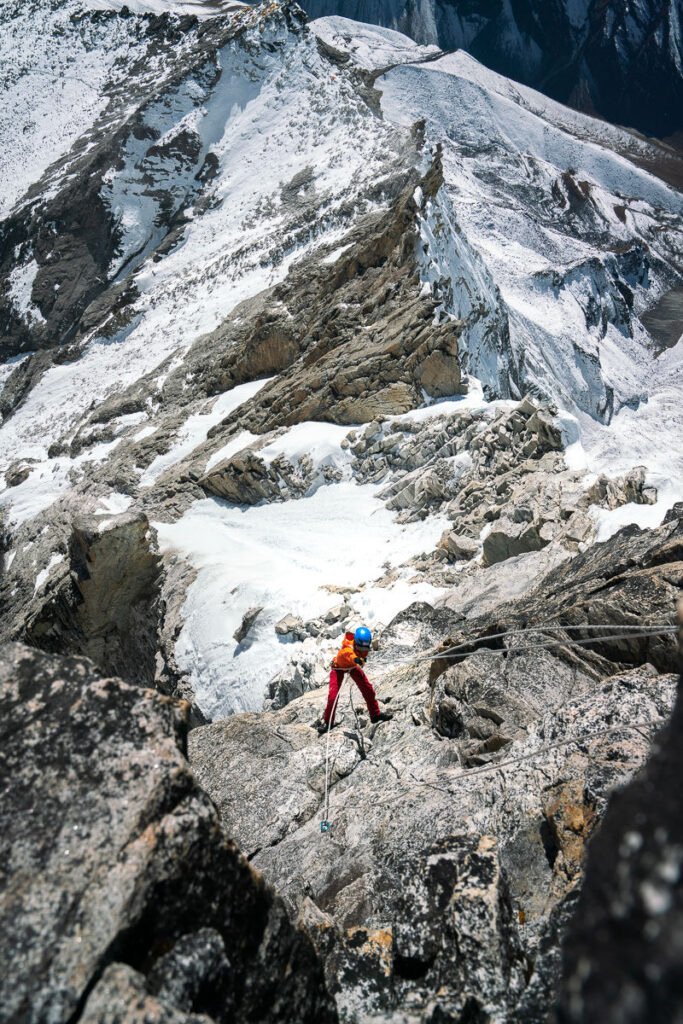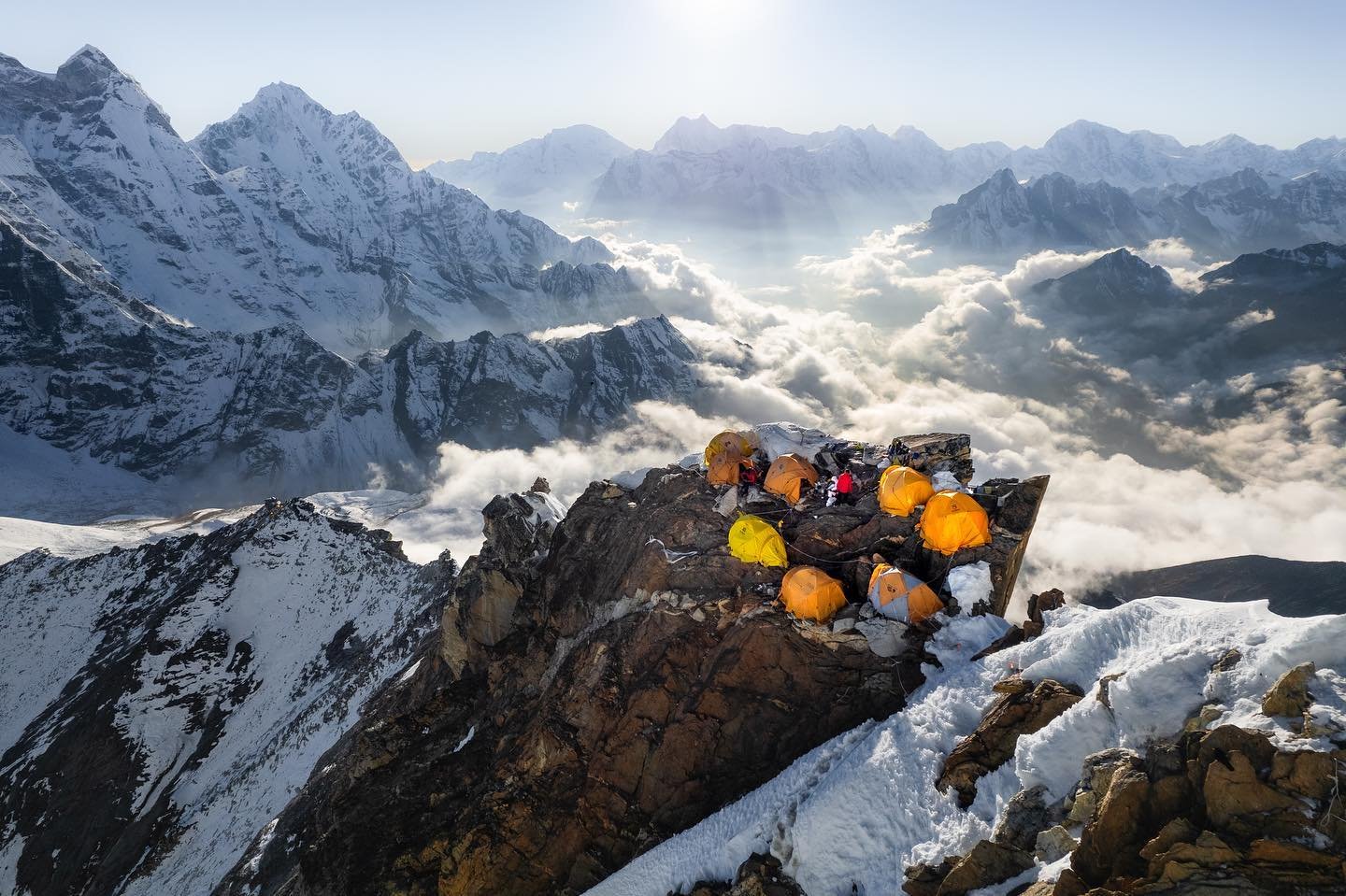Mount Everest Expedition, climbing strategy - Namas Adventure
The Everest, as in the mountaineering, is the greatest goal of climbing adventures. As a mountaineering challenge, it has attracted people to come and explore this breathtaking Himalayan mountain. The most desirable achievement accomplishing here is to climb to the summit of Mt. Everest 8848M.
There is a system that every Everest climber should follow to increase the likelihood of success. It’s based on experience, planning and skill but there are other factors too such as clear weather window, sheer persistence and training. Our expert team of Everest expedition strategists take all the factors involved and build a plan that ensures your dream becomes a reality, not just once but time and time again. Everest results from the combination of a great strategy and a system. If you decide to join an Everest expedition, you will be dealt with professional guides who will do everything they can to ensure you reach the summit. We give you a structured game plan to assure that you’ll get to base camp and one day, to the summit of Mount Everest.
Everest Base Camp 5346M
We take a slow trek through the world's iconic Everest base camp trek, acclimatising and getting the perspective of the local region. Our first goal will be to summit Lobuche east as our acclimatisation peak. After that our team heads towards our final camp to settle in Everest base camp.
If you want to invite your family or friends to join you until Everest Base camp or Lobuche East Peak climb (Beginner/Intermediate) then you can find more information on the link below or please mail us to make those arrangements.
For more information on Everest Base Camp (Click here)
Lobuche East 6119M climb for training and acclimatisation
We use Lobuche East peak as our acclimatisation and training peak. Mount Lobuche East 6119M is another popular 6,000M climbing peak in Nepal. This peak will provide us a perfect starting point to refresh our skills, climb a 6000M+ peak to get our body acclimated to high altitude, and enjoy the climb with our fellow expedition members. As this will be the group’s first climb together, this will give our guides a better understanding of where each climber are in terms of confidence, fitness and skills.
We will be using base camp and high camp before we summit Lobuche East mountain and head back to base camp and rest for a night there before we move towards Everest BC.
Everest Base Camp 5346M
Preparation will have already begun even before the arrival of climbers at the base camp. Our base camp manager and the team will have already set up our individual camps, storage camps, comms-media stations, toilet-showers, kitchen-dining tents, and Namas base camp HQ for all other briefing purposes.
Puja Ceremony
2024 Namas Everest expedition team at base camp after puja ceremony
All of our expeditions only begin after a Puja ceremony. Where a dedicated Lama Guru (head Monk) will conduct the ceremony. He will recite the prayers to The Mountain gods asking for well-being, safety, safe passage and a successful expedition. All climbers will be requested to take part in the ceremony as this is very important for the guides and your climbing gears will also be blessed during the puja.
Training at Base Camp and Khumbu Icefall. (Ladders, fixed lines training) 5486M / 17998ft
Training at Khumbu ice fall
After settling at base camp, this is where all the climbing team will reside for the next 40+ days. Climbing ladders to cross the great Khumbu icefall is the first real objective/technical challenge when climbing Everest. So, we focus a large portion of our training on getting used to crossing these ladders. Another part of our training will be climbing on the glaciers which are near to our base camp. Here we will further refine our skills by climbing vertical ice walls using fixed ropes and ice axe. We do our best to mimic the environment in the icefall and train walking on the step ladder step by step. By the time we start our way to climb Khumbu icefall to climb up to camp 1, all climbers will have a good understanding of crossing the ladders and will also be guided personally in real-time.
How many rotations: Each time we go from base camp to Camp 1 we will have to cross Khumbu ice fall.
When will climbers sleep here: No, we do not sleep here.
Camp 1 (6,065M/19,900ft)
Camp 1 Everest Expedition
Camp 1 is will be setup once Khumbu Icefall challenge is crossed. The camp is setup below the Nuptse in an icy and snowy surface. The route gets even from here onwards up to camp 2. This will be the first area where climbers will have to share tents and accommodate in an alpine environment.
How many rotations: 2 rotations
When will climbers sleep here?: Climbers will sleep here during acclimatization rotation mostly.
Camp 2 (6400M/20997ft)
Hike from Camp 1 to Camp 2 is a fairly even one out of all the climb during the entire expedition. The route is a pass sitting right between Nuptse, Everest and Lhotse face right in front when climbers hike.
How many rotations: 2 rotation
When will climbers sleep here?: Climbers will sleep here during acclimatization rotation mostly and when descending back from the summit.
Camp 3 (7200M - 7500M / 23622ft+)
Camp 3 sits at a steep section of Lhotse's face. This climb and will be one of the most strenuous uphill climbs using fixed-line ropes from camp 2 to camp 3. Camps here are one of the most dangerous ones as they are set up in small ledges/pockets where it is suitable. We ask all our climbers to make sure their safety ropes are tied onto the main safety ropes as there have been many falls and incidents, particularly during nighttime.
How many rotations: 2 rotation
When will climbers sleep here?: Climbers will sleep here during acclimatization rotation mostly and possibly when descending back from the summit if they are too tired to make it to camp 2.
South Col (Camp 4) (7906M / 25938ft)
This will the final camp before heading to the summit. The camp sits at 7906M just 100M below the Death Zone area. Climbers will be using oxygen bottles when they are in their tents as the air is very thin here. From the South Col to the summit it is about 1.7-1.9 miles and usually takes from 6 to 9 hours or more. We will begin our summit bid just before midnight with a steep climb up the Southside of Everest. Upon reaching the Balcony at 27,500 feet, climbers turn West up the ridge to the South Summit, over the Hillary Step onto the Summit Ridge, and then to the summit.
How many rotations: None
When will climbers sleep here?: 1 night
Summit of Everest (8848.86M / 29031.69 ft)
Our aim will be to stand at the summit around 7 - 10 am in morning. The climb to the summit will be one of the hardest and toughest part of the entire expedition. As we leave the south col, first we will have to climb a steep hill about 30-40 degrees to the balcony of the south side of Everest. From there with the support of fixed-line rope we jummar and ascend climbing on the southeast ridge to the south summit. Here we rest and replace our new O2 cylinder and after regaining our energy, climb to cornice traverse, then to Hillary's step, and finally reach the summit or roof of the world, Everest. For most climbers, once they climb the Hillary step it will roughly take 30min to reach the summit of Everest.
Once on the summit, we rejoice our moment, celebrate take pictures and soak it all in before we gather our moment and get ready to head back down to our camps. The duration of your summit depends upon how long the good weather window will remain open. Remember on any mountain climb the summit is only halfway done. Heading down is another dangerous part there have been many incidents. We slowly make our way through the same route to South Col camp with our aim to stop at Camp 2. The entire climb will be about 16 - 20 hours depending on the fitness level of climbers.
Are planning to climb and summit to the roof of the World one day? We run expedition to Everest every year (2023) taking all your climbing personal needs into accounts as well as implementing responsible and sustainable strategy in our expedition strategy. Our team is here to assist you in making your dream of climbing Everest being safe with tons of fun and being responsible & sustainable during our expeditions. Email us at bookings@namasadventure.com to inquire.
Live Your Dream. Live Your Story
Manaslu Summit 8163M. True Summit. The debate ends here - Namas Adventure
For years if not decades climbers have been debating about reaching the true summit(4) of Manaslu and where it actually is. Finally this year the drone shot captured by Jackson Groves during his Manaslu expedition made it clear as daylight to the world. His images clear the argument once and for all. Jackson himself mentions in his blog (Journeyera) that he stopped short at the fore summit and did not proceed to the main summit.
Mingma G seen climbing to the main summit. Majority of climbers previously stopped at the fore summit, claiming Manaslu 8163M Summit.
Mingma G, who set up the fix-rope at the pinnacle snow point of the summit (true summit) along with the Himalayan database claimed that this was only achieved only after 45 years (1976). Others argue otherwise but now we can understand why reaching the true summit which is 20m-25m away from the fore summit (Shelf 2) is such a dangerous challenge to overcome at 8100M+ level.
The last section is very technical and exposed which has to be climbed down a few feet, traversed through steep, snow, and rocky slopes with more than a hundred-meter drop, and is clearly not for any inexperienced climbers.
Manaslu 8163M expedition is considered an introductory 8000M+ expedition to see how non-seasoned climbers handle themselves climbing at the death zone but the last section from the fore summit to the true summit is not for the inexperienced climbers. For one the climb is a very dangerous and technical climb this final section which won’t be able to handle any sort of traffic jams and any form of rescue in between is near to impossible. Only very experienced seasoned climbers who want to stamp their name on the elitist group whose aim to hold records or gather as many summits are advised or if you have several previous climbing experiences (not just 2 or 3) then going up to the real summit is advised. Also, bearing in mind now that the true summit is clear to many, most climbers will be attempting the pinnacle point hence traffic might become an issue in such a small section.
Prior to this year (Autumn 2021), Manaslu 8163M summit has been claimed by many but it turns out only a handful of climbers had been to the main summit. The Tolerance zone concept proposed by Stefan Nestler is particularly interesting. His concept suggests two types of summiteers -
The general summit group: Many who have claimed to be at the summit have gone back home believing that they have been to the true summit. This will definitely come as an annoyance to many but the majority of the climbers who do not care about being in the absolute elite list won’t be back to climb Manaslu just to climb the few last meters.
The elitist summit group: Are the absolutes who make no compromises even to the last stone or snow point at the very top to claim the true summit. These climbers will have to come back to update their summit records.
Moving forward climbers who want to climb Manaslu as an introductory 8000M expedition will have to think really hard and make a sensible decision before venturing further away from the fore summit to the true summit. For the ones who want to be on the elite table list, the debate has ended and the true summit is clear. Operators too will have to be clear about the true summit and fore summit plans.
So, as the debate ends, are you planning to climb Manaslu 8163M in near future? Namas Adventure/Expedition team will be planning our expedition strategy to the true summit. However, to the non-seasoned climbers, the option of climbing the fore summit is still possible with our team.
See you in the mountains.
Go. Live Your Story.
11 other essentials items for Mountaineering expedition: Easy to forget but super useful in the mountains - Namas Adventure
Mountaineering expeditions are tricky and when it comes to packing our gears it never ends. Pack, unpack, repack, re-check tour list and repack again. Wait for a few days and you feel you have missed something or you are wondering how can I make my pack lighter & smaller. So begins the process of organizing it and repacking it again. Our guess is you will never be satisfied with the process.
In this post, we have listed 11 essential items that may not look handy but are super useful during your mountaineering expedition. These items are not super-must and are easy to miss but having them in your pack can make your life a little bit easier during your expedition. Consider it mountain luxury at your disposal, adding a bit of comfort to your expedition.
Lip guards (Yes, more than one) & Sunscreen cream SPF 50, 70, or 100 (Also more than one)
SPF 50 blocks 98% of UVB rays
SPF 100 blocks 99% of UVB ray
Extra socks and gloves
We highly suggest you pack at least 1-2 pairs of expedition socks and gloves. There are days when you don’t feel like doing your laundry and having that extra socks is comfort on its own. Gloves are tricky, great if you don’t loose one, but if you do having that backup pair is key as you won’t be able to climb without your gloves. That we can guarantee and frostbite is not the ideal situation you want to experience.
Cold/warm air Mask regulator
This is one of the tools that we would consider essential for every climber. I It is amazing that many climbers are now attempting higher expeditions above 8000M+ like Everest, Makalu, Manaslu etc without supplement O2. (Kudos to the human potential and one’s motivation of pushing themselves) Or even climbing at 6000ers to 70000ers like Baruntse, Himlung, etc peaks. The air is so thin, dry, and crip cold that it takes a toll on our nose. Gross, it may sound but climbers know the issue of the clogged up nose and trying to get rid of this booger and breathing in cold air which is a struggle on its own. These air mark regulators are a godsend. It helps retain the moisture and regulate the cold air you breathe in to somewhat tolerable and a little warm. These are slowly becoming a must-have choice for many professional climbers. We can recommend two products which are listed below.
Thermos flask with a cup
Super handy when things are flexible and accessible especially when camping in high camps. That sip of warm water or tea is a god send and a booster. Imagine just having a cup when you want to drink water in your camps, the value of it is immense.
Nose/cheek Shielder
Nothing fancy here the UV rays from the sun and the cold air might be harsh on your cheeks and nose especially. So taping up can protect it from burning up.
Satellite communicator
Want to give peace of mind to your friends and families during your expeditions? Then satellite communicators are your answer. Garmin and other providers allow you to send messages to your loved ones or audience to keep track of your expeditions. (Works in most of the Himalayas Expeditions) You will have to use their subscription plans to be able to connect to the internet and use the features. The great news is you can use their FREEDOM plan when you are in the mountains and cancel it once you are back home.
Extra batteries, power banks and portable solar panels:
Solar technology keeps advancing and that’s great news for everyone. Highly recommend getting portable solar panels that you can just hang on your bag when juicing up your batteries and devices. Especially when you are in the remote corners of the Himalayas or other mountains, the sun is the only source of energy on clear days so you will want to make the best out of it and recharge all those batteries. Goal Zero makes some amazing portable solar panels and other devices that we can highly recommend for expeditions.
Extra Sunglasses
Nothing is more frustrating than losing or breaking your glasses when climbing in the mountains. Reflections from the sun are harsh and strong or even during gloomy days you must have a pair or even impossible to climb without a good visual. So always have an extra glass as a backup option. Plenty of brands out there but we are in love with JULBO pairs 😍.
Pee bottles
One can only understand the comfort of having a pee bottle when you are inside your tent and the temperature outside is freezing below -10C. Having a pee bottle at your reach is always handy when you do not have to keep getting out into the cold and dark to just your little business. That’s why we consider this, one of the musts.
Pro tip: Comes super handy when you are driving and you don’t have a place to make you wee stop 😅.
Nuts, Bars and Energy gels
You will always need that constant supply of nutrients in any form. Be it in solid-food form or liquid through the water. So having nuts, bars, or energy gels is always handy which are pocketable and easier to carry and just reach out when climbing or just resting. There’s plenty of amazing brands out there in the market. Cliff bars, High5 nutrition, SIS, etc
Wet wipes
Showers are a luxury during expeditions and it’s hard to maintain a constant flow of water at some locations or even non-existent. Wet wipes are your answers then. For the most part during the long mountain expedition, climbers understand that they may not be able to take shower for an extended period of time but we can adapt. Take a wet wipe shower (at least that’s what we call it) is a perfect alternative.
Do you have an item that you think is a must, on long expeditions that makes your life a little bit comfortable in the mountains? Please comment below.
And if you are planning mountain adventure in the Himalayas then our team is here at your service. We have yearly 6000M peak expeditions like Mera peak or Chulu West peak for beginners and experienced level climbers. 7000ers such as Baruntse 7129M Peak or Himlung Himal 7134M peak for the explorers or challenge seekers who want to climb higher peaks. 8000ers such as Manaslu 8163M or Makalu 8485M for the ones that want to get into the death zone and summit the Big E, Mt. Everest.
Explore More. Go.
Live Your Story
Namas Adventure team
When to climb Ama Dablam? (Spring or Autumn) - Namas Adventure
When planning an expedition to climb Ama Dablam in Nepal, you may be wondering what the best time to tackle this peak is. With years of experience leading expeditions and local knowledge from our guides, we can say that it really depends on your preference for climbing in different conditions. Luckily, Ama Dablam is accessible for climbing in both spring and autumn. In this article, we will outline the conditions you can expect during each season, so you can choose the one that best fits your style and preferences.
What’s the difference between Spring & Autumn climb? 🧗
There are fewer climbers during the spring season (70% fewer climbers) compared to the autumn season.
More snow/Ice on the mountain during the spring season result.
The spring season sees a longer daylight duration compared to the autumn season.
Spring climbing days are colder & more snow showers are to be expected.
Autumn sees more stable weather compared to the spring season.
More Avalanche prone (Camp 3) during Autumn.
Spring (Mid March - End May) sees a lot more snow compared to autumn. The spring season on Ama Dablam is a true test of adventure and endurance. With fewer crowds and the added challenge of fresh, deep snow, it's the perfect opportunity for thrill-seekers to test their mettle. The chance to stake a claim on the notorious Yellow Tower is a rare and coveted opportunity, and the chance to tackle the mountain's vertical and exposed sections with minimal traffic is an experience not to be missed. Spring tests your patience, especially when things don't go according to plan, and teams may need to improvise a lot. That's why spring sees fewer climbers on other peaks (excluding Everest and Lhotse) compared to autumn. However, when spring does offer clear weather, it is one of the best times to climb in Nepal.
Irina Galay - Ama Dablam Spring Expedition
Autumn (Mid-September - End of November) attracts many climbers to most of the peaks in Nepal. The snow and ice melt during spring and monsoon, revealing granite rock formations that are visible while climbing. The post-monsoon air brings clean and crisp conditions, and the snow in the Himalayan peaks has melted and settled significantly compared to the deep, snowy conditions of spring. This makes the climbing conditions more favorable for all climbers. The season starts earlier, with shorter days and stable weather conditions. The autumn season begins in September and typically sees snowfall towards the end of November, with heavy falls expected as winter approaches. Ama Dablam is particularly popular with climbers during this season, and is probably the most famous peak to climb in autumn."
Conclusion
As you stand at the base of Ama Dablam, the icy peak towering above you, you can't help but feel a surge of excitement and nerves. This is a mountain that demands respect, with its steep, technical routes and high altitudes. But you are ready for the challenge.
Whether you choose to brave the snowy conditions of spring or the crisp, stable autumn weather, one thing is certain: this will be an adventure you'll never forget. With fewer climbers on the mountain during the spring season, you may even have the chance to claim your own slice of solitude on the iconic Yellow Tower.
As you make your way up the mountain, the challenges will come thick and fast. From vertical ice walls to exposed traverses, Ama Dablam will test every ounce of your skill and determination. But as you stand on the summit, triumphant, you'll know that the reward was worth it.
So what are you waiting for? Grab your gear and join us on an unforgettable journey to the top of Ama Dablam. It may be tough, but the memories you'll make will last a lifetime
Lets, go summit Ama Dablam and other peaks around the world.
Go.
Live Your Story.
Question.
Which season do you plan to climb Ama Dablam & Island Peak (or Lobuche East(? Please comment below, we’d love to hear from you.
We organize Ama Dablam and Island Peak expedition (or Lobuche East via Gokyo) every year during spring and occasionally during autumn. Planning to climb Baruntse one day? Whatever your climbing goal is drop us an email. Our team will be glad to have you onboard and together we shall achieve the summit and enjoy the climbing experience. Our team is here to assist and make your climb in the Himalayas an enjoyable, accessible, and comfortable one.
Experiences, fitness and skills required to climb Baruntse Expedition - Namas Adventure
What previous experience is required to climb Mount Baruntse?
This is probably one of the most important questions we get asked a lot, and climbers will need to weigh in with their previous expedition when planning their next high/extreme altitude peak expeditions. Baruntse peak climbing is no different. This 7000M+ peak does come with a substantial set of challenges and objective dangers. First, you will have to be very comfortable and experienced with ropes, climbing with climbing gear, ascending and descending on fixed-line, and bearing crisp cold climbing conditions.
Preferred Previous mountaineering experiences
Anywhere above 4000M - 6500M+ peaks with semi-technical to technical climbs around the world. For example Alpamayo, Huscaran, Aconcagua, Mt. Kenya, Denali, Mt. Blanc, Mt lenin, Ebrus. If you have experience climbing semi-technical to technical peaks with long ascents and descents, you may be qualified to tackle Baruntse and other 7000M peaks in the Himalayas. It's important to consider your previous expedition experiences and determine if you have the necessary skills and comfort with climbing techniques, such as using ropes and climbing gear, ascending and descending fixed lines, and handling cold conditions at high altitudes.
Fitness level - 4
We have graded fitness level 4 for Mount Baruntse. To successfully climb Mount Baruntse, a high level of physical fitness is necessary. This includes exceptional overall fitness, endurance, and strength. Mental toughness is also essential for these demanding expeditions. Prior experience on semi-technical to technical peaks with long ascent and descent sections is preferred for this challenge. It is important to be in top shape and have the necessary skills to tackle this physically demanding climb.
To prepare for the physical demands of climbing Mount Baruntse, it is recommended to have an exceptional level of all-around fitness. This may include the ability to run a half marathon or marathon, cycle for 2-3 hours, or hike with a load of 20 kilograms for 3-4 hours. Additionally, mental toughness and previous climbing experience will also be beneficial for success on this expedition.
Good strength and muscle endurance training routine can be implemented with a variety of approaches such as taking part in cross-fit sessions and kettlebell training.
Skills to be learned.
Guides in Nepal will advise you to keep it real simple. So there are four basic things you must - must know.
Figure 8 knot and how to tie a stopper knot at the end of the rope.
Ascending/jumaring on fixed-line and abseiling with super 8 belay device or ATC descender in multi-pitch sections. You will have to be very very careful and well-rehearsed on abseiling since there is no room for errors when descending. You only get that one chance when coming down so you will have to be super careful. And for safety backup have ‘prusik knot’ tied on the main rope.
Climbing, traversing and hiking with crampons on for long-duration on ice, rock, and snow surface.
Performing snow arrest and safely getting back up if by any chance climbers slip and slide.
As climbers joining Baruntse expedition will already have previous experiences, we recommend climbers to have extra essential skills in their climbing arsenal. If you cant find mountains to climb near your place, rock climbing indoors and outdoors is one of the best ways to keep refreshing your rope skills and staying in climbing shape.
With all commercial expeditions, the majority of your expedition is handled and taken care of by your expedition company. Having competent members from operational management to guiding leaders on the field is key for any successful expedition. Once you are signed up and you’ve got the necessary skills and experience all you need to be is physically and mentally prepared that is your commitment to fitness training.
Challenge yourself.
Go. Live Your Story
Are you planning to climb a remote, rugged, and challenging 7000M+ peak with substantially less objective danger? Whether your goal is simply to climb an extremely high altitude peak, explore and climb remote peaks in Nepal, or progress to higher 8000M+ peaks then our team at Namas Adventure/Expedition is set for your next adventure. Email - bookings@namasadventure.com or Call/Whatsapp us at +447446976060 and our team will be there to answer your inquiry and instruct you with any questions regarding the expedition.
Visual Journey of Baruntse Expedition - Namas Adventure
The experience of climbing Baruntse is one of the most thrilling climbs in the Makalu Barun Valley. Not only is the climb beautiful and raw but it is physically challenging. Land in the buzzing historic city of Kathmandu following then to the famous Lukla airport. From there trek through the Khumbu region to enter into thick jungles of the Barun Makalu region to climb the icy summits of Mera. After acclimatizing well at Mera, the following adventure leads to the summit of Baruntse.
Climbers pass through several beautiful villages and as we reach Mera BC our alpine camping begins. Once climbers reach Baruntse base camp we rest there and prepare for our Baruntse Summit. The climb demands an intermediate level of skill and past experience and our team members are made up of highly experienced climbers. Expect a little bit of everything on the route – scrambling on the rock, climbing on steep ice/snow, and multiple camps on the mountain. Follow along as we describe the entire journey in images, as we take the beautiful yet challenging journey up to the summit of Baruntse 7129M.
Boudhanath, Kathmandu
Arrive in the vibrant and beautiful city of Kathmandu. Our team picks you up from the airport and takes you to your hotel. There you rest and can explore the cities vibrant culture and traditions. Boudhanath (Buddhist shrine) is one of the places where you can explore.
Tenzing - Hillary Airport, Lukla, Khumbu, Nepal
Expect to reach early at the airport as most Lukla flights are in the morning. Once we arrive in Lukla (40 Min flight) our expedition starts. Porters load their packs meanwhile our climbers get their breakfast and excitement begins.
Trek through the beautiful villages passing through lush jungles and rugged trails. Climbers will come across the jungles of Rhododendron and other wild trees. Also, lots of mules and Sherpa porters along the first two days of the trek.
Trek through beautiful villages and stay in local tea houses
Monasteries and other cultural sites are a perfect detours to explore.
Once you enter Makalu Valley the mountains open them selves and climbers will be walking very close surrounded all around by the Himalayas.
Climbers can expect to see a lot of high and dry granite walls and Himalayas all around when trekking to higher tea houses and camps.
As soon as we enter Makalu Barun Nation park climbers will be able to see moraines and glaciers flowing through the Himalayas. Mera-la Glacier can be seen in the far distance just below the clouds.
Climbers and porters climbing Mera - La glacier, ascending higher to Mera high camp. From Mera-la the real alpine mountaineering begins.
Mera High Camp 5460M is one of the most interesting high camps during your expedition. We camp here for a night before making our early summit push to Mera Peak summit.
Mera Summit 6476M. This is one of the most spectacular and accessible climbs for anyone with even no climbing experience before. Mera summit offers a 360 panoramic view of surrounding Himalayan peaks. Everest, Cho-Oyu, Makalu, Lhotse, Kanchenjunga, Ama Dablam, Baruntse, and other uncountable amounts of 6000M and 7000M peaks are visible on a clear summit day. A visual galore to satisfy your adventure soul.
Heading towards Seto Pokhari
After Mera Peak summit, the journey heads further deep into Hunku valley taking us through base of Chamlang and other Himalayan peaks finally arriving at Baruntse base camp 5460M.
Namas team, Baruntse base camp.
Puja ceremony at Baruntse Base camp. After a day of rest, puja is organised seeking permission from the mountain god for safe passage when climbing the mountains. A monk recites and performs the rituals meanwhile all the climbers take care in this ceremony. Spirits are high and blessings are offered and everyone is to be ready for their final part of the expedition. Mentally, physically and spiritually.
West Col to Camp 1 (6100M) is one of the challenging objectives of the expedition. Once climbers leave from base camp, it takes about 2 hours to reach the crampon point. All expedition gears are then worn and after another 45 min hike on icy surface climbers reach the base of 200M vertical wall. After 2-3 hours of jumaring climbers arrive on a flat Baruntse plateau. The lead guide then advises all the team where to set up the first camp.
Camp 2 (6400M)
Camp 2 (6400M) is a short 2 - 4 hour ascent about 400M - 500M high. Gradually going higher climbing team sets up the camp just below the Baruntse ridge.
Namas Guide Pega Sherpa can be seen descending/traversing the exposed Baruntse ridge at 7000M elevation.
Climbers leave early pushing for the Summit bid. Most of the climbing is done in the ridge section of Baruntse. This is the most challenging and dangerous section of the entire climb. After passing from three false summits finally, climbers will reach their ultimate destination. Expect a long and challenging climb.
Namas Baruntse team Pega, Nima and Chewang Sherpa successfully summited Baruntse 7129M and fixed the rope to the summit paving way for other team members.
🏔Makalu 8463M seen in the right hand side, Summit of Baruntse 7129M
Baruntse Summit 7129M. Lying just between the Great Lhotse wall and Makalu.
Fish eye view of Amphu Lhabtsa pass 5800M. Another ridge to Baruntse on the right. Everest and Lhotse in front of the climbers (between the clouds). This is the wall between Khumbu and Makalu/Huknu valley.
For more information on our Baruntse expedition or Baruntse Express expedition or any of our other international expeditions check out our website. (Call/WhatsApp) - +44 7446976060 or send us an email at bookings@namasadventure.com
2021 Best Mountaineering Boots 7000 - 8000M - Namas Adventure
Extreme high altitude mountaineering is a geared heavy activity. Specialised gears are a must and mountaineering boots specially fit in that category. Mountaineering boots should be considered as an investment, as these boots are not only meant for climbing but serve other crucial functions to keep your feet protected so that the climber's feet are warm, safe, and performing. Let’s talk about the best boots for 7000M - 8000M+ level. How many or which boots depend on your personal preference. i.e one pair of boots for 7000m and the other pair for 8000M+ or just one pair for all expeditions. First, let’s discuss the important functional features of the boots and the rest can come later. Below are 2021’s best extreme high altitude boots for 7000M- 8000M+ level. So if you are planning expeditions like Baruntse, Manaslu, Ama Dablam, Himlung Himal, or Mt. Everest these are the boots we highly recommend. First, let us help you be clear with the category of boot and crampons needed for this type of expedition.
Mountaineering boots and crampon category (More on Boots category blog post):
B3 Boots (7000M & 8000M+)
B3 boots are designed for extreme mountaineering. This category of boots has the stiffest soles and uppers available, providing lateral and medial support for front pointing, step-kicking, and traversing on steep terrain giving climbers a high level of traction for the most challenging conditions. This category includes high-altitude double boots as well as lighter technical climbing models. These boots allow both heels and toe welts to allow fitting of C2 - C3 crampons to take advantage of the easy step-in attachment system of heel clip and toe bar. B3 boots are the best when it comes to innovations and standards of high-altitude mountaineering boots.
Insulations
Double
As the name suggests double boots feature a structured outer boot combined with an insulating liner boot that can be removed. They are generally slightly heavier than single boots and are bulkier, but they do offer that extra level of warmth. They can also be easier to dry in more remote locations, but the inner booties can be worn while you are tucked inside your sleeping bags.
Triple
This is a hybrid mountaineering boot and is becoming increasingly popular amongst both the makers and climbers when it comes to extreme mountaineering. Perhaps more similar to a single boot with the addition of an integrated gaiter for extra warmth and snow protection, this also helps to keep them drier than a single boot. If they do become wet, you can’t dry them as easily as you can a double boot.
Lacing system
Standard lacing system
Like the name suggest standard lacing system are the same as in any boots. The only benefit of this to BOA system is, should it break or is damaged it is easily replaceable with other extra laces. Like any normal shoelaces.
Boa system
BOA systems are a handy and easy method to loosen or tighten your shoes. Simply rotate the screws to tighten or pop open and adjust your feet to loosen. The only downside of this system is that it is hard or impossible to repair when you are climbing in the mountains. We have a kind of love-hate relationship with this, very convenient on one end and if it breaks we have no way to repair it especially in the mountains.
Crampons category
C2
C2 crampons are referred to as mixed, hybrids, or semi-step crampons. These crampons are ideal for winter climbing and alpinism. The binding system of C2 crampons is compatible with B2 and B3 boots as they require a stiff sole and heel groove to lock onto. Traditionally C2 crampon usually has 10-12 points that include secondary spikes, that are semi-sharp.
C3
C3 crampons combine a metal toe bail with a plastic heel lever and as a result, they are referred to as ‘Step in’. The Step-in system requires very stiff boots with both a crampon heel and toe groove, because of this they are only compatible with B3 mountaineering boots. C3 crampons normally have 12-14 points that offer the best performance on steep icy slopes and technical mixed routes. Additionally, aggressive front points offer the best penetration on hard ice and on some models the front tips are replaceable. These are ideal for the hardest winter climbs and high-altitude ascents.
Famous ones:
La Sportiva - Olympus Mons Cube
When it comes to mountaineering and boots La Sportiva is one of the market leaders and they do make amazing mountaineering boots. Olympus Mons Cube is their latest non plus ultra of technicality for Himalayan mountaineering, arctic crossings, and uses in extremely cold conditions. The boot is 100% made in the Dolomites and guarantees lightweight, quick fit, safety, and water repellent for the mountaineer. The model features extremely contained external volumes, for a dual thermal high mountaineering boot and reduced weight compared to the previous version becoming the lightest model in its category.
Boot Features
Gaiter: Water repellent, stretch Cordura® + extremely high abrasion-resistant fabric with UltraSonic Welding technology and internal heat sealing + inner water repellent gusset
Inner Shell: High tenacity Nylon uppers + PE with different densities + thermo-reflective aluminum
Lacing: Double Boa® Fit System in the upper part and in the lower part of the shell for differentiated lacing
Removable double bootie: High cut outer layer: 6 mm PE + EVA Single Density with Flex Zone and double hook&loop closure - Low cut inner layer: 4 mm PE + EVA Single Density
Insole: Insulating carbon HoneyComb 3 mm + Gold Insulation Aerogel 3 mm by PrimaLoft®
Midsole: TPU 2 mm polyurethane with differentiated thickness at the toe and heel for attaching the crampon + front insert for tech skialp binding
Sole: Combination of Vibram® Litebase and Vibram® MorFlex® Expanded EVA for maximum lightweight, abrasion resistance and thermal insulation
Weight: 1.300 g (1/2 pair)
Sizes: 38 - 48 (+ 1/2) (49-50 on request)
Scarpa - Phantom 8000
Worn by Nims Dai and the Nepalese team who summited the first K2 Winter climb. So you can be certain that these boots are bound to perform in the extremes. The Phantom 8000 represents the very pinnacle of SCARPA design to create the warmest technical boot for use on the world’s highest and coldest mountains. Built around the expedition-proven double boot concept, the innovative Phantom 8000 uses state of the art construction materials for lightweight, waterproof, and warmth. The gaiter now had an offset waterproof zip to make the outer boot even easier to get on and off when wearing gloves. The inner shell is now even warmer as well as easier to operate. Wintherm technology creates a secondary layer of insulation under the gaiter. The Sock-fit XT tongue combined with the new fast lock lace system and fast strap closure make it even easier to get a close, precise fit, with no pressure points over the foot.
Boot Features
Crampon Rating C3
Inner Boot Altitude 8000
Insole Carbon Fiber + EVA + Aerogel®
Last Outer Boot- HAR8 Liner- RL
Sole Vibram 0 Gravity Lite
Upper PU-Tek + S-Tech + H-Dry®
Weight 2650g pair 42
Millet - Everest Summit GTX
Millets iconic EVEREST SUMMIT GTX is their benchmarking boot built for most extreme conditions. Recco tracking technology is integrated into their boots. Technically pre-eminent with its absolutely protective and thermal design. This boot project’s hand-made Italian quality has played a major role in the history of mountaineering. Designed for a universal fit, which convinces all feet. Yannick Graziani wore this model when scaling the south face of Annapurna: it protected him from the biting cold of this inhospitable wall and the irreversible effects of frostbite. This "five-season" product is designed for extreme winters and expeditions at very high altitudes. Guaranteeing protection down to -60°C, the EVEREST SUMMIT GTX is the boot most widely used for off-the-scale trips thanks to its ample interior, giving highly accessible fit. No need to have a slim foot to benefit from its excellent performance-to-precision ratio. A boot ready to step into any faraway adventure - but above all, the adventures you invent for it.
Boots Features
Fabric technologies: Aero therm, Gore tex, Primaloft, Recco, Vibram
thermal construction: outer boot + shell + inner boot, isothermal to -60°c precise fit,
crampon compatible rigid plantar support
waterproof gaiter, anti
perforation upper, zip closure with reflective velcro over flap
Armor edge fabric on medial to protect from crampon damage
strong insulated inner shell, easy
quick lacing
high thermal efficiency inner boot, insulated insole
lightweight, precise mountaineering outsole
Not so Famous brands
Asolo - Manaslu 8000 GV
Technical and high-altitude mountaineering and extreme use in cold environments. Developed in collaboration with the Asolo Test Team the model is engineered for extreme alpinism and low temperatures use guaranteeing maximum performances. This is Asolo’s triple-layer boots. The external gaiter guarantees resistance to abrasion and thermal insulation. Their zip closure system is meant for fast, waterproof, and precision when putting on thier boots.
Boot Features
OUTER GAITER: High tenacity stretch Cordura + neoprene + Schoeller Soft Shell + Pu rand
GAITER LINING: Gore-Tex Extended Comfort Footwear
SHELL: Cordura laminated with aluminum film + polyethylene 3 mm
SHELL LINING: Polyesthilene + polyester
INNER BOOT: Cordura laminated with aluminum film + polyethylene 3mm
INNER BOOT LINING: Primaloft 400 grams
LASTING BOARD: Carbon fiber
ANATOMIC FOOTBED: Manaslu Primaloft + no woven textile
SOLE: Vibram Betulla + toe reinforcement in full Vibram rubber; microporous midsole + Tpu crampon attachments
FIT: Man
WEIGHT: 1.250 (g) (1/2 pair size 8 UK)
SIZE: 7-12 UK
Boreal - G1 EXPE
G1 Expe is a triple layer boot consisting of an integrated outer gaiter, mid-layer ‘shell’, and a removable inner bootie. The outer gaiter has a soft and comfortable elasticated cuff with both zip and strap closures for failsafe reliability. The lower portion of the gaiter is insulated with encapsulated layers of triple Thinsulate™ and polyethylene and is reinforced with an extremely rip-resistant material in the high wear zones. A new synthetic rand material has been used which is lighter and warmer than rubber and won’t perish in the high U.V light conditions found at high altitude. The outer surface of the mid-layer boot is constructed entirely from lightweight synthetic textile and lined with a tough and waterproof/breathable Cordura reinforced laminate. Sandwiched between is a 6mm layer of EVA foam for excellent thermal insulation. Our new ‘Tanka’ lace closure system is simple, secure, and easy to manage while wearing gloves.
Boot Features
UPPERS: Composed of three layers: A fully integrated and highly insulated outer gaiter, mid-layer shell, and removable inner bootie
OUTER BOOT: Integrated outer gaiter is a waterproof and highly breathable material with a waterproof membrane and fully Thermo sealed seams. Reinforcement panels in extra durable and tear-resistant material. The lower portion of the gaiter insulated with Thinsulate and polyethylene layers. Premium quality waterproof TIZIP. Shell: One-piece lightweight Teramida with Lorica and neoprene. 6mm EVA foam insulation layer and Cordura waterproof breathable lining. 1.4mm neoprene insole for thermal insulation. Easy to use 'Tanka' lace closure system. Lightweight TPU rand for durability
INNER BOOT: Bootie made from very lightweight and extremely insulative triple layer laminate. A heat-reflective aluminum film is bonded to a durable polyurethane outer layer and insulative EVA foam on the internal side. Boreal Dry-Line® waterproof breathable lining with fully Thermo sealed seams. Triple Thinsulate® layers (no adhesives used) surround the foot guaranteeing maximum thermal protection with no cold spots. The sole of the bootie is covered with a durable textured TPU surface. Easy-adjust 'Tanka' and strap closure system with the adjustable fit around the instep area
MIDSOLE: Ultralight Boreal PBG-680 carbon composite midsole with lateral torsion control. Unique Thinsulate® lining for superior underfoot thermal insulation
SOLE: Vibram Betulla super lightweight and highly insulative outsole in special low-density EVA / rubber mix. Dual-density EVA and PU shock absorbing layers. Differential hardness TPU toe and heel pieces for automatic crampons
USAGE: Extremely cold conditions. High altitude mountaineering. 8000m peaks.
WEIGHT: 2610 grs./pair (size 7 UK)
Fitwell - GNARO 8000
The warmest and lightest boot of its kind made with the best materials currently available. Cordura® fabric with ceramic paste coat to capture UV rays and heating the hull. Gaiter lined and coupled with waterproof Event® membrane for water and wind resistance. Oblique polyurethane coated zipper, watertight closure, easy opening and closing with gloves. Rubber rand 1.6mm thickness, anti-wear and anti-scratch. Hull structure: inside Cordura® coupled with EVA and aluminum film with Velcro closure for the highest foot comfort. Multi-layer lightweight, thermal liner, aluminum lined, absorbent felt and thermal wadding. Anti-slip insole. Carbon insole coupled with a nanotech insole reaching the highest standards of lightness and insulation.
Boot Details:
UPPER: Cordura® + Superfabric®
GAITER LINING: Waterproof eVent® fabric
INNER SHELL: Cordura® + felt + alluminium
INNER BOOT: Primaloft® + felt + aluminum
INSOLE: Carbon alveolar + Aerogel®
SOLE: Vibram® Mulaz Evo + EVA
CRAMPON: Automatic C2 or C3
More details
Kailas - Everest Boots 8000M
Boot details:
Extremely wear-resistant and durable - Outer shell made of Dyneema® mesh, YKK Waterproof zip, puncture-resistant fabric and efoam mudguard Supremely warm and comfort - Inner boot made of PE insulation and thermo-reflective aluminum film and Graphene insulation that keeps you warm at -60℃dynamically. PrimaLoft® Gold Insulation Aerogel at forefoot and toes can withstand a low temperature of -78℃.
Boot Features
Single/Double: Double
Weight: 1300g (size 42)
Gaiter: Wear-resistant Dyneema® mesh / efoam mudguard / puncture-resistant fabric / YKK Waterproof zip/ 3M reflective graphic
Outer boot: Bulletproof laces / QFS(Quick Fitting System)
Inner boot: Graphene insulation / PE insulation / Thermo-reflective aluminum film / Extremely durable TPU
Insole: 3 layers: anti-bacterial and anti-odor foam, non-woven polyester and thermo-reflective aluminum film PrimaLoft® Gold Insulation Aerogel at forefoot and toes
Midsole: Lightweight and high-strength carbon fiber lasting board
Outsole: Vibram® ultralight outsole for alpine climbing. Completely crampon compatible.
Lacing system: Velcro closure, YKK zip, bulletproof laces
More details
Conclusion
Choose the best one that’s out there in the market. With companies innovating and developing high-performing boots out there it is much safer for climbers now more than ever. We have listed some of the most famous ones to lesser-known brands which are still amazing boots. We cannot stress this enough but quality (highest) matters. You do not want to lose your toes or suffer from any frostbite incidents. The game is extreme in the Himalayan altitudes.
Which mountaineering boots do you prefer and why did you choose that particular boot? Please comment below :)
Go. Take on your peak.
Live Your Story
When to climb Baruntse? (Spring or Autumn) - Namas Adventure
Are you wondering when the best time is to plan a Baruntse peak expedition in Nepal? Many climbers ask us this question. Based on our experience running expeditions and input from our experienced guides who regularly climb in the region, the best time for you to climb may depend on your personal preferences. Fortunately, Baruntse peak is suitable for climbing in both the spring and autumn seasons. In the following information, we will outline the conditions typically experienced during these seasons to help you decide which is the best fit for you.
Spring sees a lot more snow compared to autumn. After the winter and with ongoing spring showers, you can expect deep or fresh snow in the mountains. There appear to be more crevasse openings during the spring season. The fresh snow in the mountain definitely makes breaking the trail a lot harder (which the strong Sherpas are happy to do for you) and climbers can expect some weather-related disturbances on their planned summit window. Therefore, you should expect delays due to weather conditions. If you enjoy an extra challenge in high-altitude peak climbing, then spring expeditions might be for you. Spring definitely tests your patience, especially when things don't go according to plan and teams have to improvise a lot. That's why spring sees fewer climbers on other peaks (excluding Everest and Lhotse) compared to autumn. However, when spring does open up with a clear weather window, it is one of the best times to climb in Nepal.
Recorded Summits - There haven’t been any commercial expedition summits at Baruntse. (2005 - 2022). In 2021 Spring summit's success was recorded via a new route, alpine style by Marek Czech and Russian climbers.
Autumn is a popular time for climbers to attempt peaks in Nepal. The air is clean and crisp after the monsoon, and the snow on the Himalayan peaks has typically melted and settled compared to the deep, snowy conditions of spring. This makes climbing conditions more favorable. The autumn season begins in September and usually sees snowfall towards the end of November, with heavy falls expected as winter approaches. Baruntse also sees more teams attempting to climb during this period, although there are still fewer climbers compared to other famous expeditions like Ama Dablam or Manaslu.
Recorded Summits - Commercial expeditions have only been successful at Baruntse 7129M during the autumn season. (2006 - 2022). Namas team was able to successfully fix the ropes to the summit paving way for oncoming teams during the 2022 fall season.
Conclusion
No matter which season you prefer, climbing Baruntse and Mera is a challenging and rewarding experience. Spring offers deeper snow and more frequent showers, while autumn has less snow and stable, settled surfaces but shorter days. Both seasons offer a unique climbing experience and the opportunity to achieve a lifetime accomplishment.
Question.
Which season do you plan to climb Baruntse and Mera Peak? Please comment below, we’d love to hear from you.
We organize Baruntse with Mera peak expedition every year during autumn. Planning to climb Baruntse one day? Whatever your climbing goal is drop us an email. Our team will be glad to have you onboard and together we shall achieve the summit and enjoy the climbing experience. Our team is here to assist and make your climb in the Himalayas an enjoyable, accessible, and comfortable one.
Lets, go take on Baruntse and other peaks around the world. Go. Live Your Story.
10 important things to know about Ama Dablam climbing Expedition - Namas Adventure
Ama Dablam 6810M
Ama Dablam is known for its stunning beauty and is a highly sought-after mountain for mountaineering enthusiasts. It is considered a challenging climb on its own and is often viewed as a "must-do" for those who are interested in alpinism and mountaineering. Many people choose to tackle Ama Dablam either before or after attempting a larger expedition like climbing Mount Everest.
History: Ama Dablam was first summited on 13th March 1961, a Silver hut scientific expedition led by Sir Edmund Hillary. Ama Dablam's expedition has been a dream for many mountaineers. Its Southwest ridgeline is the safest route to climb this amazing peak.
We have listed 10 useful pieces of information that will help you prepare for your Ama Dablam peak climbing expedition.
1. When is the best time to climb Ama Dablam?
Ama Dablam is best suited to climb during three climbing seasons.
Spring (Mid-April-May) - There are hardly any climbers during the spring season solely because major expedition companies are focused on the Everest expedition. Climbers seeking fewer teams and climbers on the route are recommended to climb during spring.
and Autumn (September - November) - Autumn attracts a lot of climbers. You can expect a lot of teams climbing from Mid October - November end. November - December is less busy but a tad colder compared to peak October expedition.
Early Winter (December - January) - Winter climbs are for the extra gritty challenge seekers. This is another best time of the year when there are very few climbers and the Everest trails are quieter. Winter officially begins on 21st December. As expected be ready to brace for crispy cold and an unexpected gust of wind.
Note - Ama Dablam is the 3rd most sought technical climbing peak in the Khumbu region, with the majority of the permits being issued during the autumn season.
2. Climbing route and difficult sections, mountain grading of Ama Dablam climbing
All major commercial expeditions use the Southwest Ridge section route of the mountain. Ama Dablam expedition is graded at TD / 5 in difficulty. (Alpine / Fitness grading link).
Exposed section after Camp 2.
This expedition involves steep vertical mixed climbing on rock, ice, and snow. You must be in excellent physical and mental condition to tackle this challenging climb. Do not underestimate the difficulty of this mountain. Your previous climbing experience will help you gauge your fitness level and understand how to safely tackle the climb. With proper preparation and guidance from our team, you can achieve your dream of climbing Ama Dablam. The sheer vertical ascent of this mountain will likely be one of the toughest climbs you have ever attempted. However, the breathtaking beauty and exhilarating experience of reaching the summit make it all worth it. Are you ready to push yourself physically and mentally to reach the summit of Ama Dablam? It will surely be one of the most memorable peaks you ever climb."
Notable technical Sections at Ama Dablam climb.
Note - Your entire climb from camp 1 to the summit will be assisted by a fixed rope.
Climbing to Camp 2 “Yellow Tower”
Images by Jackson Groves / Journey Era
The route from Camp 1 to Camp 2 is one of the most technically challenging parts of the expedition. The climb to the top of Yellow tower involves a 90-degree vertical ascent. This section of the route is graded anywhere from 4.11 to 5.7 - 5.10 in rock climbing terms. It's important to consider the impact of altitude, carrying a backpack, cold weather, and ice conditions on the mountain while attempting this climb.
Mushroom Ridge 6250M (Between Camp 2 and Camp 3)
This section of the route is not for the faint-hearted, as you will need to carefully climb up and scramble on the steep rocky face of the mountain before reaching an exposed knife-edge ridge. Walk carefully across the ridge, which has 600-meter drops on both sides, before continuing your climb towards Camp 3.
3. How much does Ama Dablam expedition cost and what does it include?
The cost of the Ama Dablam and Island Peak expedition with Namas Adventure (Please click here for cost). Our team provides premium, all-inclusive services, including 1:1 climbing support, local guides who share their knowledge of culture and traditions, and a focus on safety, successful summit strategy, and top-quality base camp support. Our team is dedicated to being a responsible, ethical, and sustainable mountain adventure operator, so climbers can fully enjoy their climbing experience.
List of what’s included in your booking.
IFMGA/NMA certified Guide leader
Namas Branded merchandise (Down Jacket, Cap, Buff)
1:1 Sherpa Guide /client ratio.
Head chef and assistants ( Helpers increase with the number in climbing team members )
Arrival hotel in Kathmandu
All trekking and climbing permits (Khumbu Region Permit and TIMS)
All internal-local transportation to and from the trekking trailhead
Expedition tents (2 or 1 person tents) Brands Salewa, Mountain Hardwear, Samaya equipment, Kailas
30 kgs personal weight
Chocolate, energy bars, hydration pills, biscuits, canned foods, nuts
Burners and expedition equipment
Walkie-talkie/ Satellite phone/GPS
Breakfast, Lunch, and Dinner on trek and expedition days.
Lodge accommodation during the trek
Porters per guest
The arrival pick up and departure
Basic First aid kit
Welcome/Farewell leave Dinner
4. Are guides necessary for Ama Dablam Peak?
Climbing Ama Dablam requires a permit, which can only be obtained through a registered local company in Nepal. It is mandatory by Nepalese law to have a guide on high altitude peaks above 6,000 meters. We recommend hiring a guide for climbers of all levels, as a successful expedition requires a strong team with a proficient base camp crew and experienced, competent, and trustworthy climbing Sherpa guides.
5. Choosing the best-acclimated itinerary for climbing Ama Dablam
Proper acclimatization is crucial for success on any high-altitude climbing expedition. Our team follows the "climb high, sleep low" mantra and will conduct rotations to Camp 1 and 2 as part of our acclimatization strategy. Through our years of experience, we have carefully crafted the itinerary to ensure the best possible chance of success for your expedition.
6. How difficult is it to climb Ama Dablam? What training and skills are required?
Ama Dablam, also known as the "mountaineer's mountain," is a challenging climb that requires experience and determination to reach the summit. The route from the base camp to Camp 1 (5800 meters) involves climbing moraines and a rocky boulder uphill. The fixed line normally starts after Camp 1, where the climb becomes more technical. The climb to Camp 2, located on top of the Yellow Tower, is the first crux of the climb, requiring a 60-70 foot vertical granite ascent at 20,000 feet. The mushroom ridge from Camp 2 to Camp 3 is another challenge, and Camp 3 is only set up once the guide leader determines it is safe. From Camp 3, climbers head up the pyramid to the summit, which involves an exposed climb on 55-65 degree slopes. The descent is difficult, especially on tired legs, and requires careful focus.
Training for Ama Dablam
To prepare for this challenging climb, it is important to focus on endurance, core, and strength training. This will help you to handle the vertical sections of the ascent, such as the "Yellow Tower" on the way to Camp 2. Suggested training activities include long-distance running, cycling, and hiking with added weight. It is recommended to begin training at least 12 weeks in advance of your climbing departure. More on our training mountain expedition blog.
Skills
Additionally, taking advanced mountaineering classes can be helpful in learning technical skills like rope climbing and proper use of gear. For the Ama Dablam climb, it is recommended to be comfortable with multi-pitch climbs up to a grade of 5.10 a,b,c and to have experience with mixed climbing. Ice climbing skills up to WI-3 or WI-4 are recommended for spring climbs, although fixed-line ropes will be used for the steeper sections of the mountain.
You should be proficient with the above-mentioned mountaineering skills, climbing with ice axe support and abseiling independently in exposed mountain terrain. Be ready for a long descent when coming down from the summit. This is particularly where most of the incidents occur during this expedition. A few accidents did occur on this route when the climber did not properly attach the safety rope to the main fixed line when abseiling down the mountain.
Ama Dablam's climbing should not be taken lightly. By no means is the peak an easy climb and we require interested climbers to have a previous high altitude of several 4000M+ to 6000M+ technical climbing experience anywhere in the world. You have to be in your best physical fitness shape. All mountain expeditions are graded based on their technical and physical difficulties. Successfully accomplishing the Ama Dablam expedition is a mixture of teams, skills, the right experiences, fitness, mental strength, weather, and other detailed mountain-climbing factors.
7. Right clothing, gear, and boots (trekking and mountaineering)? Rental options for Ama Dablam climbing?
Choosing the right gear is very important. We advise climbers not to make compromises on the quality of gear and clothing, and to pay attention to layer up comfortably as well. You will depend highly on your clothes to keep you warm enough for the dropping temperatures at nighttime which can go down to -10c /-20c. Please check our equipment blog for recommended clothing and gear.
Renting your gear in Nepal? The simple answer is NO. This is one of the most frequently asked questions mainly by beginner climbers. We have tested and tried several gears in Nepal and frankly, we do not recommend hiring here. We know it might seem like a huge amount of expense to buy all the gear, but they are well worth it. You can even hire from the city you live in. Make sure they are original products from well-known adventure gear companies. (North face, Mountain hardware, Kailas, etc.)
Boots (trekking and mountaineering) for Ama Dablam climb
With better technologies, climbing shoes have improved every year. We highly recommend double-layered boots like Kailas Everest 8000M, La Sportiva Olympus Mons Cube, Scarpa 8000 phantom, and Millet Everest summit GTX. It is wise to spend on good mountaineering boots, as so with all the gears that we have mentioned in this post above.
More 8000M boots link here (other media article)
8. Hydration and nutrition
To ensure proper hydration, we recommend that all clients drink 4-6 liters of water per day. It is helpful to bring hydration tablets or filtration bottles. Obtaining water at higher camps can be difficult, so our team will do their best to boil snow and provide water at higher camps and during the summit push. Most meals are prepared in tea houses, and during climbing days, our Sherpa team sets up kitchen tents. While it can be difficult to eat enough in cold, high altitudes, it is important to try to force yourself to eat. We also provide packed dried meals as an alternative option.
It is important to avoid smoking and alcohol consumption during the Ama Dablam expedition. While it may be common to see the guiding leaders engage in these activities, they are professionals who have adapted well to high altitude environments. As a climber on this adventure holiday, it is important to prioritize your health and well-being by abstaining from these harmful habits. Remember to also pay attention to your diet and hydration, as these will greatly affect your performance on the mountain.
9. Insurance and Helicopter evacuation for Ama Dablam Expedition
No matter how prepared you are, you never know when or how things might go wrong. You might be sick suddenly or not that we wish but there might be some incident, you might suffer from altitude sickness or anything we can’t imagine yet. So, for these reasons, it is always good to have insurance coverage. Our recommended Insurance companies (link)
Helicopter evacuation is our final emergency option and we do recommend you have one in your insurance, as it is the only means of transport in the Everest region. Our guides will assess your condition and examine if it is a major issue. If not, they will use their experience to motivate and push you through your trip. However, in case of emergency, helicopter evacuation will be called upon.
There is a procedure to follow when calling for emergency evacuation. We will call the insurance company hotline, get approval from your insurance, and only then helicopters are sent to the distress call location. You will have to pay for the evacuation in Nepal from your own pocket but once you are back home you can claim your money back. Make sure you collect helicopter evacuation receipts, a certified doctor’s approval letter. The insurance company will ask for this evidence to back up your claim. There was a huge helicopter scam in Nepal in 2018, so insurance companies are taking extra measures to stop this from happening. Our guides and staff members in Kathmandu will also remind you of this process during briefings.
10. Next climbing goals after Ama Dablam climbing
It is only natural that as a climber, you would want to climb higher, more challenging peaks. Once you have successfully completed Ama Dablam, consider yourself one of the capable mountaineers. Climbers know that summiting Ama Dablam is no easy feat, so you should be able to take on even higher peaks, such as those over 8,000 meters, after this climb.
Mt. Everest Expedition 8848M
Manaslu Expedition
Annapurna IV 7525M
k2 8611m Expedition
A successful Ama Dablam climbs with a strong yet fun environment expedition team, proper training, and planning before the expedition is possible. These are the things that are within your control. As we have stressed enough Ama Dablam climb is not an easy one and you will have to get every aspect right so that you have a better chance of completing your expeditions and have a great time. Join our fun-loving yet providing the best service and safety team on our yearly Ama Dablam Expedition. Our team would love to have you on board and make your dream of climbing Ama Dablam a success.
Ama Dablam Expedition - Click here
If you do have any more questions, please ask us below in the comment section or you can email us at bookings@namasadventure.com and our team will get back to you as soon as they can. Stay well.
Challenge yourself. Dare great things and live your story.


